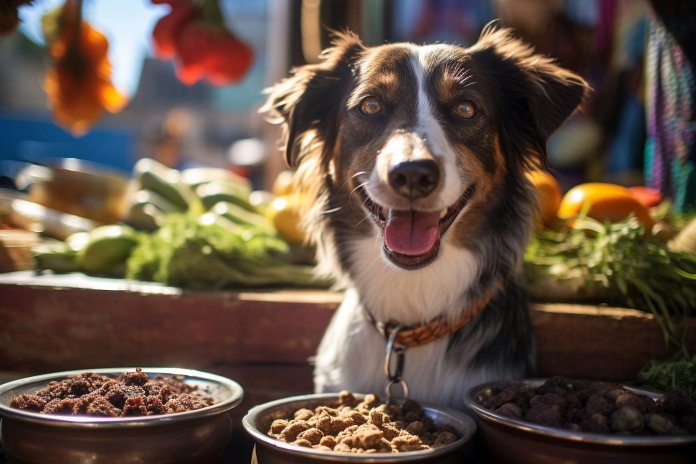
If you want to share your food with your dog, it’s important to know which foods are safe for them. Unfortunately, many foods that humans can eat are not suitable for dogs. This includes foods with peppers or peppery flavors. Peppers contain capsaicin, which can be harmful to dogs and cause digestive issues. This article will explain why peppers are not suitable for dogs and how to recognize if your dog has consumed too much pepper.
Signs Your Dog Has Had Too Much Pepper
Capsaicin, found in peppers, can irritate your dog’s digestive system and cause various problems. Signs that your dog may have consumed too much pepper include dehydration, vomiting, gastrointestinal issues, mouth irritation, stomach ulcers, and difficulty breathing. You may also notice certain body language signs such as lip licking, tongue flicking, sweaty paws, raised back hair, nose licking, hanging tongue, or wrinkled nose.
Other Signs
Other signs that your dog may have consumed too much pepper or capsaicin include vomiting, diarrhea, gastrointestinal issues, difficulty eating or drinking, stomach ulcers, and dehydration.
The History of Capsaicin
Capsaicin is a naturally-occurring chemical found in various peppers. It was originally used as an animal repellent and against pests. Capsaicin has been registered for use in the United States since 1962 and is considered a biochemical pesticide. It is used in pepper sprays, pest control, pharmaceutical research, and equestrian sports.
The Science Behind Peppery Foods and Dogs
Peppery foods are harmful to dogs because of capsaicin. Capsaicin is the chemical that makes peppers hot. It acts as an irritant for both humans and pets. When dogs consume excessive amounts of capsaicin, it can cause vomiting, poor digestion, stomach ulcers, and difficulty eating and drinking.
Training Your Dog to Stay Away from Peppery Foods
Training your dog to avoid peppery foods requires both self-control and proper training. Ensure your dog responds to basic obedience commands like “no,” “drop it,” and “leave it.” This way, you can prevent your dog from eating peppers by giving simple commands. Additionally, train your dog not to beg for food, as guests and family members may unknowingly give them peppery treats. Make sure your dog knows to stay away from food preparation areas and feels comfortable in their crate when you’re not home to prevent accidental consumption of peppery foods.
Conclusion
Peppers and peppery foods are not suitable for dogs due to the presence of capsaicin, which can cause digestive issues and discomfort. It’s important to be aware of the signs that your dog may have consumed too much pepper and take steps to prevent them from accessing these foods. Training your dog to respond to commands and avoid begging can help keep them safe from the harmful effects of capsaicin.
“Protect your pup’s digestive health by avoiding peppery foods – their taste buds and tummy will thank you!”

Tips & Things to Know
1️⃣ Avoid giving your dog any food that contains peppers or peppery flavors. These foods can irritate your dog’s digestive system and cause various health issues such as dehydration, vomiting, stomach ulcers, and difficulty breathing.
2️⃣ Be aware of the body language signs that indicate your dog has consumed too much pepper or capsaicin. Look out for symptoms such as alertness, lip licking, tongue flicking, sweaty paws, back hair standing on end, nose licking, tongue hanging, and wrinkled nose.
3️⃣ Train your dog to stay away from peppery foods by teaching them basic obedience commands like “no,” “drop it,” and “leave it.” Additionally, ensure that your dog knows not to beg for food and is trained to stay out of areas where food is stored and prepared. This will help prevent accidental consumption of peppery foods and keep your dog safe from gastrointestinal discomfort.
Frequently Asked Questions, Answered ✅
1. Why should I avoid giving my dog foods with peppers or peppery flavors?
– Peppers contain capsaicin, an irritant for your dog’s digestive system that can cause various issues, including dehydration, vomiting, gastrointestinal issues, and stomach ulcers.
2. What are the signs that my dog has consumed too much pepper or capsaicin?
– Look out for signs such as dehydration, vomiting, gastrointestinal issues, mouth irritation, stomach ulcers, difficulty breathing, alertness, lip licking, sweaty paws, and back hair on edge.
3. Can my dog enjoy any peppery foods?
– No, it’s best to avoid giving your dog any kind of food that has peppers or peppery flavors.
4. What is capsaicin and how is it used?
– Capsaicin is a naturally-occurring chemical found in peppers. It has been used as an animal repellent, against insects and pests, and in pepper sprays, pest control, pharmaceutical research, and equestrian sports.
5. How can I train my dog to stay away from peppery foods?
– Training involves self-control and personal training on your part, as well as ensuring your dog is responsive to basic obedience commands. Teach your dog to listen and respond to commands such as “no,” “drop it,” and “leave it.” Additionally, train your dog to avoid begging and to stay out of areas where food is stored or prepared.